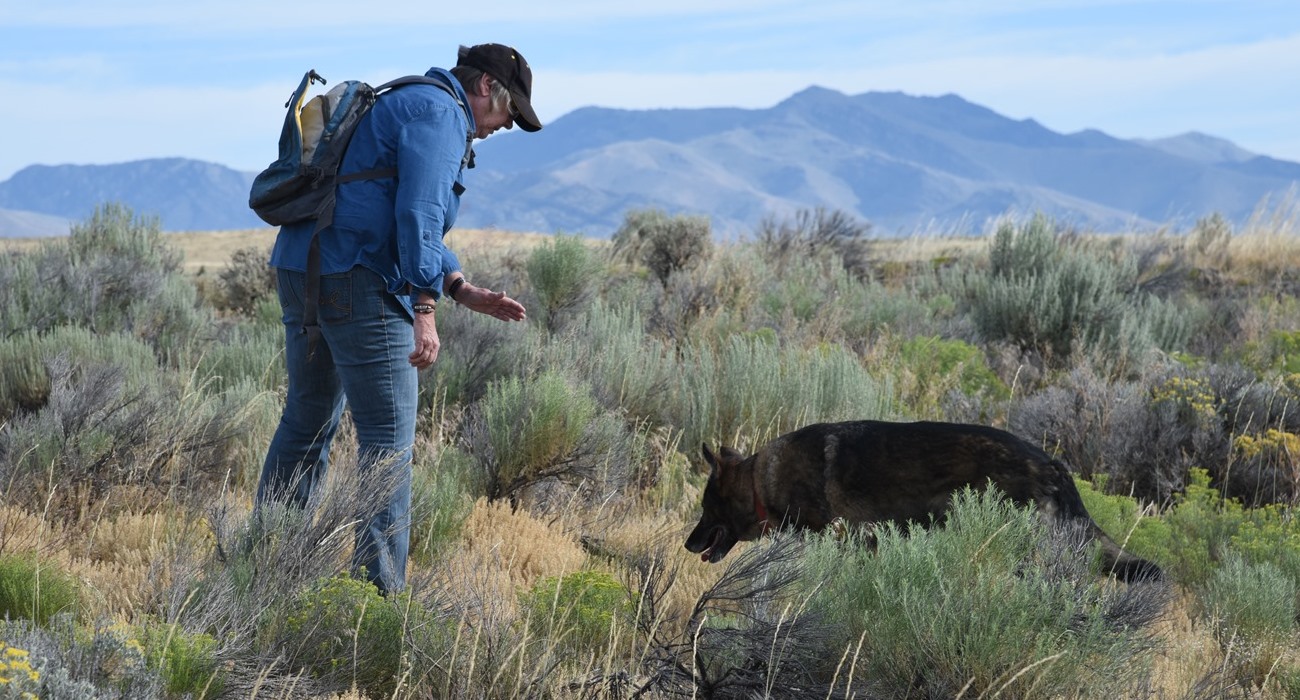“July 26th This morning at half past three o’clock Father breathed his last on earth. He was taken very bad in the night while crossing the desert, and kept getting worse until he died. He did not talk only to answer as he was spoken to, and he was at his right mind till an hour before he died.”
Nellie Slater, “Travels on the Plains in Eighteen Sixty-Two”
Of all the ghosts along the Oregon Trail, one of the loneliest may be James Slater, who died near the Big Lost River in the early morning hours of July 26, 1862, at age 53.
For nearly 154 years the location of Slater’s remains near Goodale’s Cutoff remained a mystery. His daughter Nellie’s diary gives a vague idea of how and where his body was buried, but it wasn’t until early July 2016 that two trained noses – German shepherds named Kessa and Rocco – were brought into the hunt.
Now it looks like Slater’s descendants, many of whom live in Idaho, could be visiting the site in September to pay their respects.
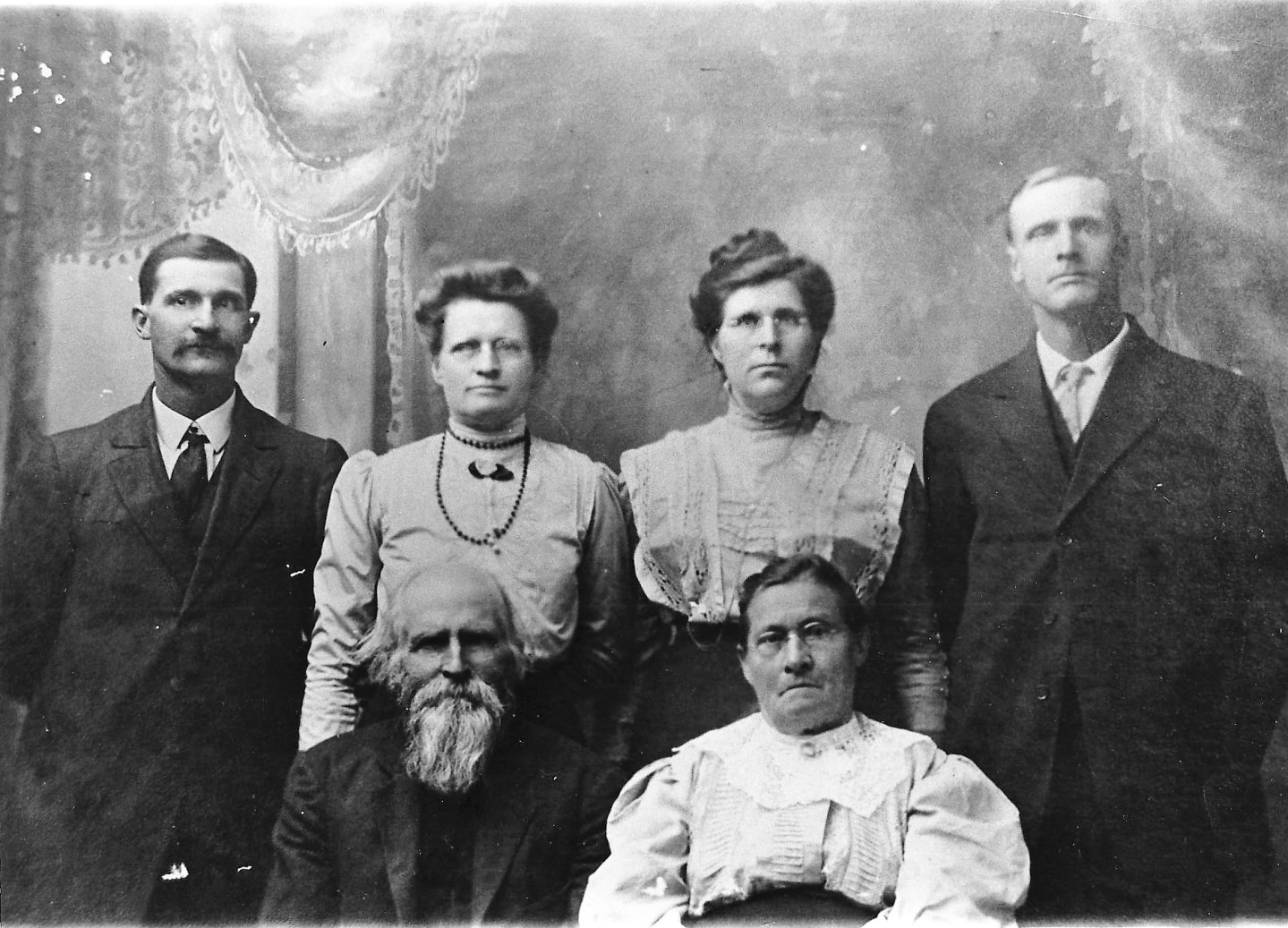
The land where Slater’s bones rest, is now part of the U.S. Department of Energy’s 890-square-mile Idaho National Laboratory Site. INL first learned of the gravesite when it received a call in 1994 from Nellie Slater’s great-grandson, Wilbur Chitwood, now 78, of Nampa, who had asked for permission to explore the area. The search turned up inconclusive, and the matter laid at rest for years.
Now, because of work scheduled to be done at a nearby facility, INL archaeologist Hollie Gilbert has been tasked with doing an assessment of the area. Having been on the original hunt for Slater’s burial site in 1994, she saw this as a chance to revisit the matter.
It was also an opportunity to call Ann Christensen of Shelley, owner of Idaho Search & Rescue Dogs, Inc. An owner, trainer and handler of national renown, Christensen and her dogs have made many live finds as well as body and evidence recoveries. She is canine committee chair of the National Association of Search and Rescue. On the historical side, she has located burial sites for the Oregon and California Trail Associations, including finds near Soda Springs and Mountain Home.
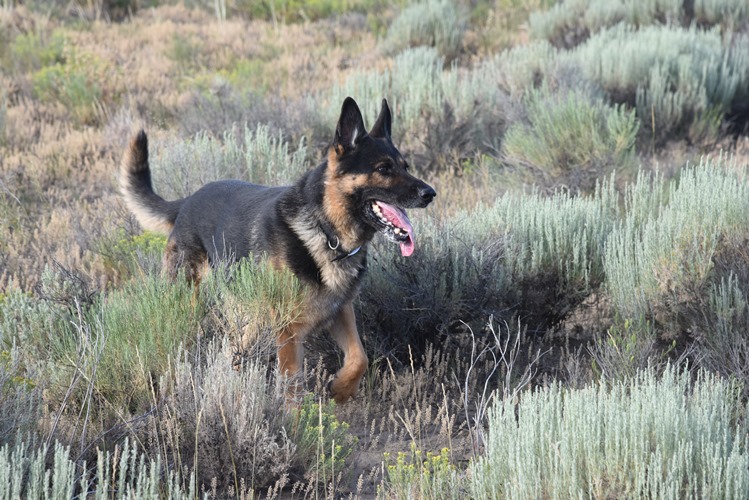
On July 5, Christensen, her dogs, Gilbert and a handful of observers trekked to the spot south of the Big Lost, east of the Big Southern Butte, where Slater’s remains were most likely to be found.
Slater died of dysentery 75 days after the family had left their home in Keokuk, Iowa. With miles of harsh volcanic terrain ahead there had been no time for pioneers to linger. A brief funeral was conducted around 10 a.m. by Mr. Hocket, the preacher in the wagon train. “We buried him half a mile south of the creek, and four rods west of the road, beneath an Indian canopy,” Nellie Slater wrote in her diary.
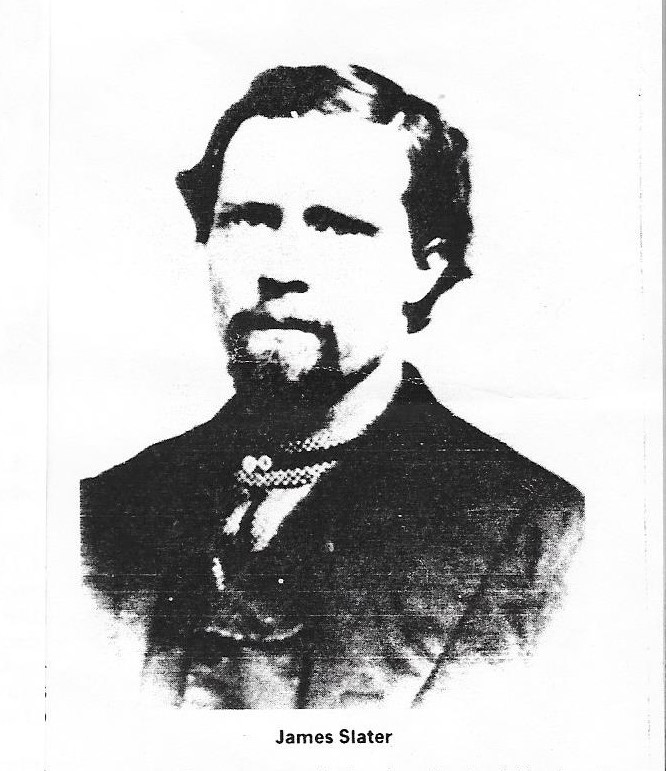
Gilbert interpreted Nellie Slater’s use of the term “Indian canopy” to mean that James Slater had been buried in a shallow pit with rocks piled on top of him. Because of the volcanic terrain and thin topsoil, the pioneers couldn’t have made too deep a hole with the tools they had, so the most likely spot was a mound of some sort.
The first step to finding the exact site was easy: Release the hounds, Kessa by herself first, then Rocco by himself. The dogs are trained to detect the scent of buried bodies, both living and dead. Christensen’s job is to watch and see if they make any quick turns or stops. If they catch a definite scent they will lower themselves on their haunches and bark.
“Their instinct is to hunt,” Christensen said. And simple as it sounds, the dogs’ motivation is to be rewarded with their toys – Rocco’s is a piece of sandblast pipe (the only thing the Christensens’ could give him that wouldn’t get quickly chewed to bits) and Kessa’s is a piece of fabric with a squeaker inside.
Of the two, Kessa, 11, is more methodical but Rocco, 9, will cover more ground. Searching the area for Slater’s remains, both dogs independently gravitated first to a mound covered with sagebrush. Neither gave a truly conclusive sign, however. “I think you’ve got a body up in this area, but water can wash the scent down,” Christensen said.
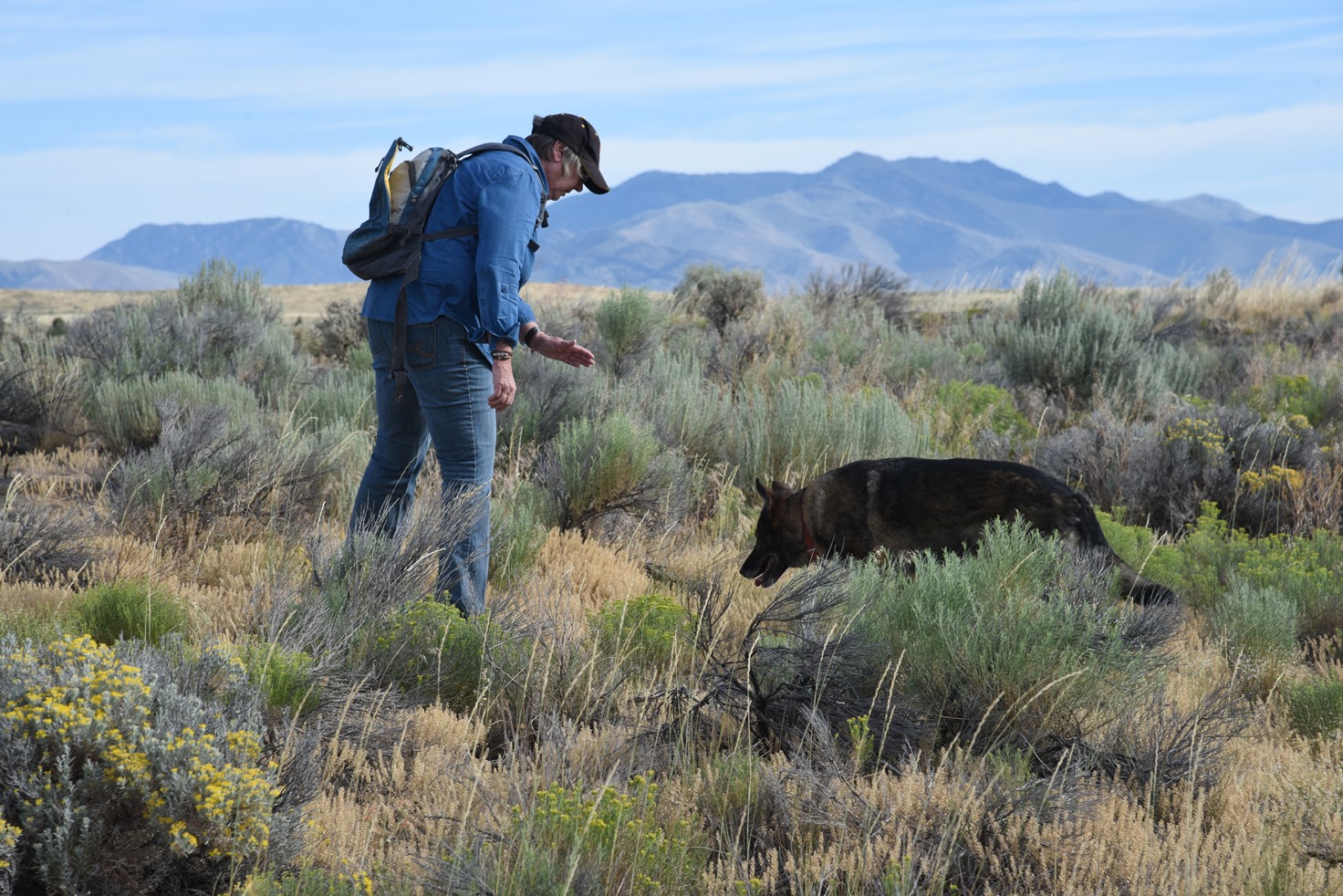
Meantime, Gilbert came across some rocks about 25 yards away that were scattered around with white calcite deposits facing upward, indicating they’d been disturbed. Max Christensen was called on to hammer 18-inch pieces of rebar into the ground, poking holes to help any possible scent to escape.
Both dogs confirmed the site separately. “I think we can say we’ve got something here,” Gilbert said.
As far as anyone knows, Slater’s body is the only non-Native American buried on DOE’s Idaho Site. Chitwood said the family has wondered whether DNA testing might be possible on the remains. In any event, they are excited for the visit in September.
“I think there’s going to be six of us,” he said. “We’re all kind of amazed you people have such an interest in this.”

